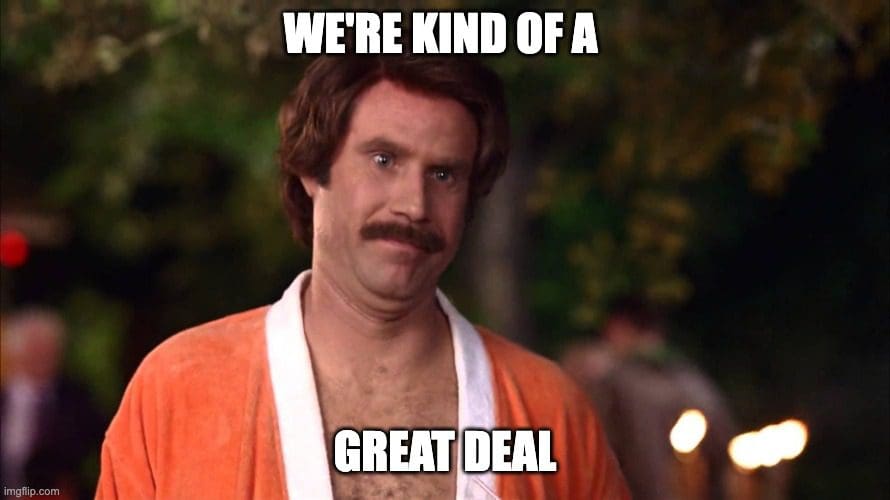Now that you’ve tried all the weird and wonderful strategies you saw on TikTok and they haven’t worked it’s time to focus on a social media strategy that will give results.
It’s not rocket science. Despite however many complicated articles you may have read already this year. Social media strategy needs to do one thing and one thing only. Mirror you as an individual or the values of your business. That’s it! The only tricky bit is then knowing who you need to see it.
There are 3 aspects of your social media strategy you need to think about;

Your social media strategy goals vs your social media strategy budget
Know how much you want to spend, if anything. You should also know how much time you can realistically put into your social media strategy yourself before you get started. If that’s an hour a week you may want to look at having someone else do it as consistency really is key.
Your social media goals
Keep them S.M.A.R.T. – Specific, Measurable, Achievable, Relevant, Time-bound. Spend some time figuring out exactly what you want. ‘I want more Instagram followers’ is too vague. ‘I want 5,000 new Instagram followers in the next 8 weeks’ is much better. It’s specific, measurable, and time-bound. Whether it is achievable and relevant depends on your starting point and industry.

Will those 5,000 new followers help you to reach your desired outcome? What do you want your social media to give you? Are you looking to showcase new products to an engaged audience? Are you looking for newsletter sign ups? The action you want your audience to take should inform your goals.
Once you know what you want the path to getting it is clearer.
Your social media budget
Let’s not muck about, social media is marketing. All marketing is constantly under-funded by businesses. So much so that businesses spending a lot on marketing becomes a talking point. More often than not because it results in huge success. Take Champagne, for example. Champagne had, until Prosecco’s emergence a few years ago, monopolised ‘the celebration’. The region had pumped so much money into marketing that their product became the ‘only choice’.
That isn’t to say you have to pump millions into it but a decent budget can give you a real boost. If you’re after quick returns then Facebook Ads may be a sensible road to go down. Or hiring/outsourcing a full time member of staff that is responsible for your social media. This may sound outlandish and expensive but it would leave you completely free to get on with what you prefer getting on with. A marketing graduate will cost you about £30k a year. An agency that provides all your strategy and creates all of posts in advance for every day of the year – leaving you to schedule them and manage the engagement (that’s us, by the way) will cost you around £12k a year.

Knowing what you’re spending in advance can also help focus your goals. If you’re not sure whether it’s best to hire a permanent member of staff or outsource we wrote a short piece on the subject, here. There’s also an audio recording if you don’t have the time to sit and read through the whole thing.
It sounds obvious but the bigger your budget the more options you have with your social media strategy.
Your audience and your social media strategy
Who are you speaking to, where are they, and what do they want?
Figure that out and you’re more than half of the way there.

Who are you speaking to?
The best way of narrowing down your audience is to establish your ideal customer personas. These fictional characters will be based on behaviours and attributes taken from your existing audience. This should go far beyond age, gender, income etc. You need to build a whole ‘life’ around these personas so you can truly understand your audience.
Creating personas can be a fun and enlightening activity. Use it as an exercise to create caricature’s of your best customers. Without basing each persona on anyone in particular you should be able to ‘recognise’ some of your best customers from the descriptors you fashion.
Think about what your personas want. What do they enjoy in life beyond business? Hobbies and interests will often influence decisions more than you may realise. How tired is the trope of business being done on a golf course? Knowing what your audience likes and incorporating that into your offering is smart business and always has been.
Create between 3 and 5 personas to cover a few personalities and incorporate all your data, and you’re good to go.

Where are they?
There’s little point being witty on Twitter if your audience isn’t there. Similarly, crafting a super fancy instagram account is pointless if no-one is going to see it. Find out where your audience are and focus your efforts there. QUAFF would recommend two platforms – most often Facebook and Instagram – but these will be determined by your audience.
It sounds like common sense (because it is) but don’t be fooled into thinking you have to be on every platform from TikTok to Telegram because you don’t and you shouldn’t be. Doing a couple of platforms really well is much better than a lot badly.
If you’re not sure on how to track your audience down online the best way to find out is often to ask them! Other standard market research might include monitoring hashtag engagement across a few platforms and having a nose at your competitors.

Your Competitors and their social media strategy
It is sensible to put together a list of your competitors. It’s very easy to get lazy at this point and churn out the usual names you’ve been aware of the whole time. It is very important to research this properly. Find out about that young, hungry business that has come out of nowhere and is tearing chunks out of your customer base online. Make a list of around 10 of your main competitors.
What do you admire about their social media strategy?
First off, it’s healthy to admire some elements of your competitors’ business. To say they do everything wrong or badly and then acknowledge them as direct competition means you are also do everything wrong or badly. Otherwise you would have left them in the dust, right?
It could be anything at all about the content being posted that you admire. Consistency, messaging, and comment engagement through to colour palette, hashtag selection, and typeface. Are they using video, slide decks, and music? How good are their subtitles, post captions, production in general? Is the content engaging and valuable?

Make a list of what you like about it then do the same exercise from the point of view of each of your personas. At this point it’s fine to take some licence with the opinions of your personas.
What has their strategy missed?
Perfect social media strategy is a rare beast indeed, Even if you did manage it., it would soon be out of date and then just ‘very good’. There will be areas that seem obvious to you that your competitors aren’t doing very well or might have missed completely! Make a list and think about how you can capitalise.

What are the keywords?
It’s simple to spot keywords when you’re looking for them. You’ll likely have noticed in this piece the phrase ‘social media strategy’ come up time and again. Look for repeated words and phrases and make a note. See which of your competitors are using the same keywords and phrases. If there’s a lot of competition then it might be worth looking for something with less usage. Keywords are all about picking your battles. My phrase of ‘social media strategy’ is one of the most congested out there – so this article is unlikely to stand out so much in the crowd – but that’s ok, because it’s valuable to our clients and audience.
Wrapping up
Bring all of this together and you’re well on your way to a decent social media strategy. The next bits you’ll need to have a think about is content, scheduling, and tracking your performance, but that’s a whole other topic. Take your time to get this bit right first – or everything you go on to create will be, at best, useless.






0 Comments